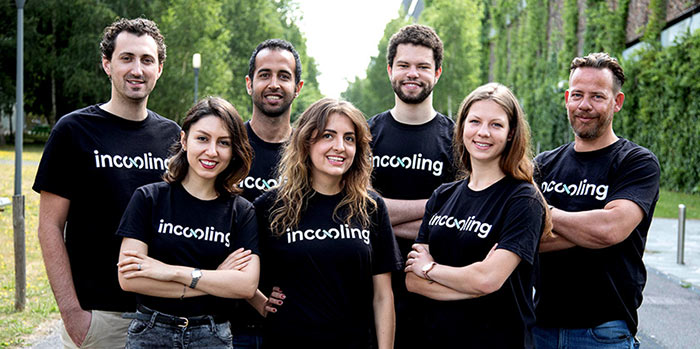Gigabyte has announced that it is collaborating with Incooling to ramp up the cooling capabilities for its overclockable R161 Series server platform. The first target for developing and prototyping the tech will be in the server market where faster speeds can pay big dividends - running applications for the high frequency trading market, for example.

With the above in mind, Gigabyte and Incooling are adapting R161 Series servers, which previously relied on Asetek ServerLSL sealed loop liquid cooling systems to support overclocking and to push performance to the max. By the sounds of things the new cooling technology does appear to have made quite a big difference in temperatures and OC speeds.
Up to "20°C lower core temperatures"
"Incooling's technology is capable of pushing temperatures far below the traditional data centre air temperatures, unlocking a new class of turbocharged servers," asserts the Gigabyte press release.
In-house tests of the cutting edge two-phase cooling technology on the R161 servers is claimed to deliver the following benefits; "up to 20°C lower core temperatures contributing up to 10 per cent increase in boost clock-speed whilst lowering total power draw by 200W". The diagram below shows the basic science behind the phase-change cooling tech which is being leveraged here.

In the diagram you can see an overview of the flow of the specialised refrigerant that fills the system. It provides cooling as it changes from liquid to gas, then the coolant is condensed back to liquid in a condenser area, aided by a radiator/fan(s). According to theory, the phase change cooler system doesn't need a pump as its cooling / condensing cycle is driven by the heat from the processor. However, you can see that the Gigabyte diagram does include a pump of one kind or another, probably to ensure consistent performance.
Gigabyte and Incooling will continue to refine this cooling system with the overall goal of greater performance with reduced energy consumption - an important balancing act for servers. Going forward, Gigabyte server systems such as its H-Series multi-node servers for high performance computing and G-Series GPU servers for artificial intelligence will be tested with this phase-change cooling technology.
At Computex 2018 CaseKing / der8auer showed off a pump-less phase shift cooler that was "actually going to be a product" but which doesn't appear to have been finalised or shipped as yet. At Computex 2016 Raijintek demonstrated a 'passive liquid cooler' using phase change liquid with sub 40°C boiling point - again this is a product that isn't available.






